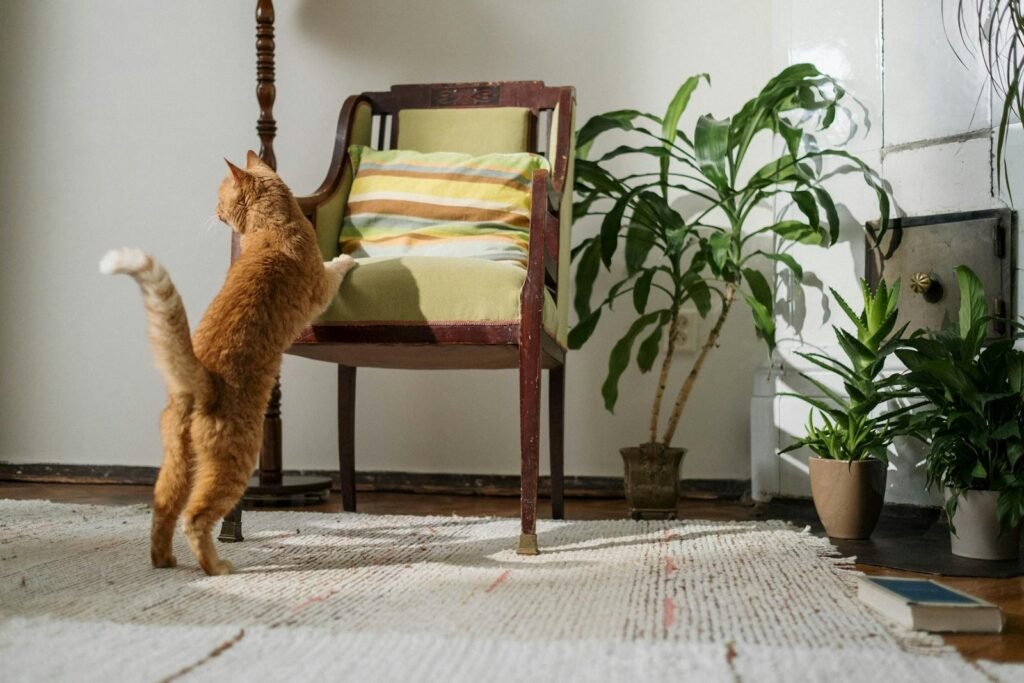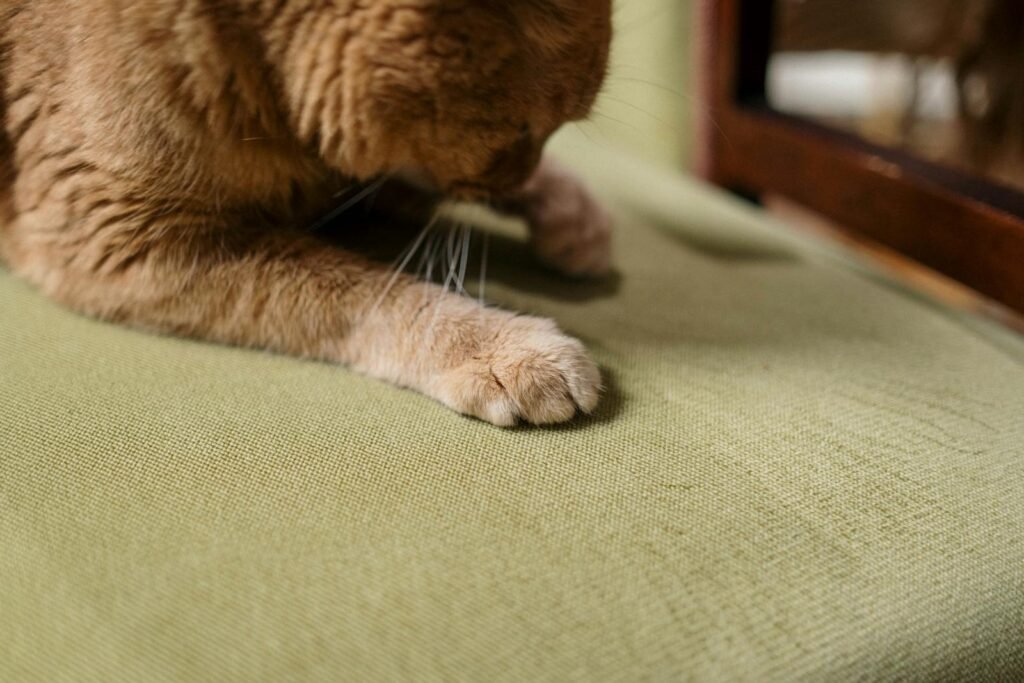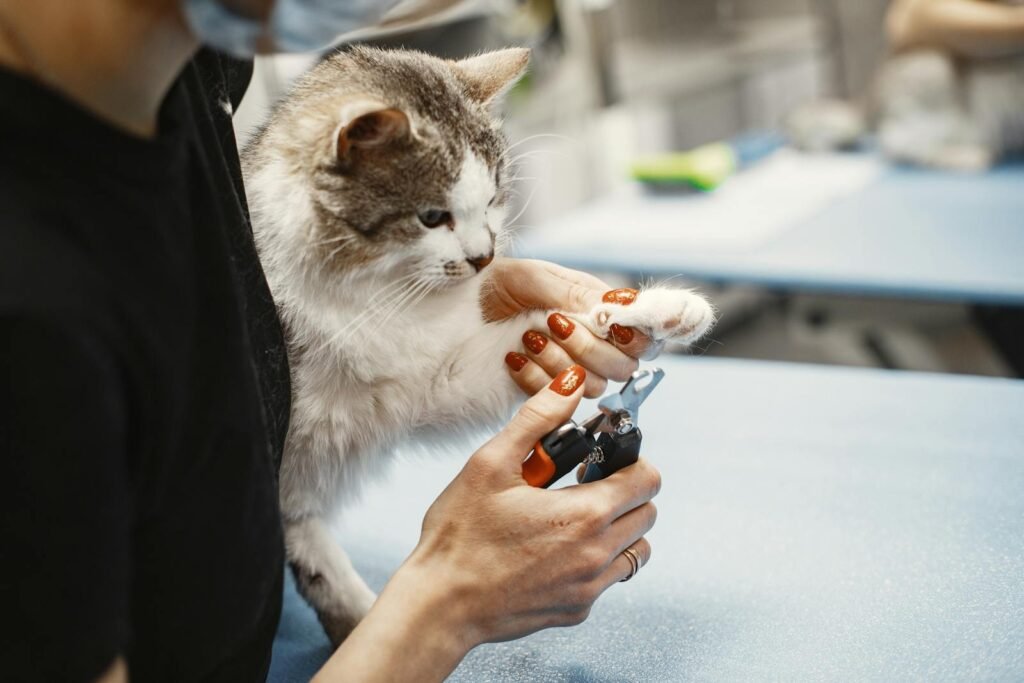
We all know the struggle — your kitty, razor-sharp claws at the ready, ripping your couch to shreds like it’s their own personal jungle gym. It’s aggravating, but yelling or punishing your cat won’t fix the problem. In fact, it may even make it worse! Cats scratch because it’s a normal behavior — used for stretching, marking territory and even for stress relief. So what can you do to keep your cat from scratching your furniture without causing stress or resentment? So read on for successful and good ways to safeguard your upholstered furniture while also making sure your cat is fulfilled.

Create Scratching Posts (The Essentials)
Providing a suitable scratching outlet is one of the best ways to prevent kitten scratches on furniture. If you have a cat, scratching posts or pads are a requirement for your home.
What to try: Buy a couple of different types of scratching posts — some vertical and some horizontal, and built from different materials such as sisal, cardboard or carpet. Different cats have different tastes, so providing them with variety will ensure they find the perfect one.
Where to put them: Because you want your cat to use it, put the scratching post next to the things your cat normally scratches. Placing a scratching post in an area where they spend the most amount of time resting or furniture will make it more likely for them to utilize it.
Train Your Cat Not to Scrape the Furniture

On occasion, a bit of assistance can steer your cat away from your furniture.
What you can do: Use a spray that is safe for pets, made to deter scratching. These sprays typically have odors that cats find unpleasant (such as citrus or lavender). Spray the area on your furniture and your cat will start to connect the scent with that location.
Another option: You can also use double-sided tape on the furniture because cats generally dislike the sticky texture.
Cutting Your Cat’s Nails on a Regular Basis
Regularly trimming your cat’s claws is an easy but helpful way to minimize damage to furniture when he’s scratching to his heart’s content.
What to do: Get in the habit of trimming your cat’s nails regularly to keep them dull. Use cat-specific nail clippers, or ask a vet for advice if you don’t know how to trim them safely.
What it does: Trimming won’t stop scratching, but it’ll help self-limiting behavior and make your furniture a little less soft and delicious.
Create Lots of Stimulation and Playtime
A bored cat is more prone to turning to undesired behaviors such as scratching.
What to do: Offer mental and physical engagement through toys like feather wands and laser pointers. A tired cat is a happy cat—and one less likely to scratch your couch out of boredom.
Why it works: scratching could be due to a build-up of energy in your cat. Regular play goes a long way in the exhaustion of this surplus energy.
Soft Paws or Nail Caps When Scratching Becomes A Problem: Another way of managing excessive scratching is through the use of soft paws or nail caps since this will prevent your furniture from being damaged.
What to do: Soft paws are glued to the cat’s nails, preventing them from scratching. Although some may dislike the feeling, it may be more temporary than whichever solution you would choose
Why it helps: it protects the furniture, which is why you should use it together with the above solutions
Positive Reinforcement of the Scratching Post: If a cat thinks positively of the scratching post, they are likely to use it.
What to do: Praise and reward your cat when they scratch the post. It may motivate them to keep off of your furniture. What to refrain from: The only concern is to avoid punishment due to various reasons. Plastic Covers for Furniture as last resort
What to do: Get furniture slip covers, which can help keep scratches shallow or out of view. This is a good solution while you’re training your cat.

Consider a Cat Behaviorist
If your kitty is still scratching way more than what they should be, despite your best efforts, it is probably time to speak to a professional.
What to do: A certified cat behaviorist will be able to help you understand why your cat may be scratching inappropriately and offer a customized plan to address and correct the behavior.
Why it works: There are instances when there are deeper behavioral problems (such as stress or anxiety) that a professional needs to help you with.
Conclusion
it’s normal for your furry friend to want to scratch, but with a little time and patience, you can direct their energy towards appropriate channels and keep your possessions safe in the process! Simply provide a variety of scratching posts, trim their nails regularly, use deterrents, and ensure they’re stimulated while in your home, and everything will eventually fall into place. As always, remember that positive reinforcement is the key to great behavior, so continue using it and stay away from yelling or punishing your favorite feline. Don’t forget about all your cats’ wins and, if you are looking for other pet enthusiasts to join., share tips, or discover new products check out the Pets Fun Zone.
- Tags:
- CatBehaviorTips
- CatFurnitureProtection
- CatOwnersGuide
- CatsAndFurniture
- CatScratchingSolutions
- CatTraining
- FelineBehavior
- FelineFun
- FerociousFelineFix
- HappyCatHappyHome
- HealthyPetsHappyHomes
- HomeWithPets
- HowToStopScratching
- PetCareTips
- PetFurnitureProtection
- PetLoversGuide
- PetParentTips
- ScratchFreeHome
- ScratchingPostTraining
- StopCatScratching



